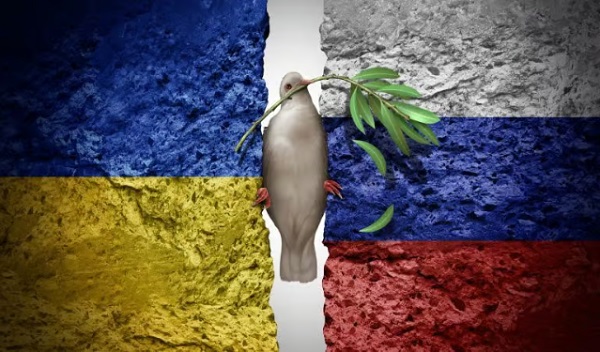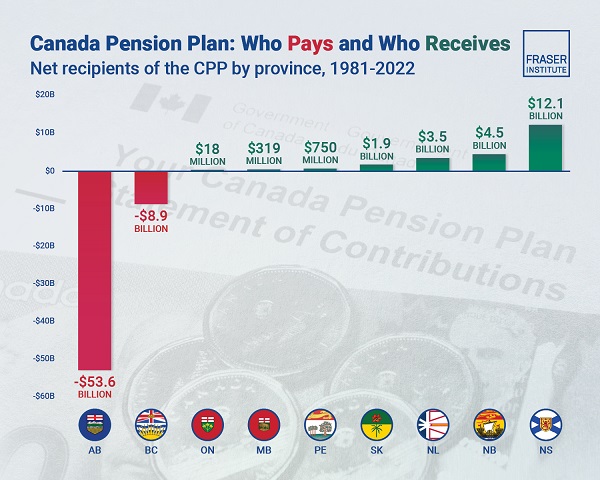Brownstone Institute
Trump Takes Over and Implements Communication Freeze at HHS, CDC, and NIH

From the Brownstone Institute
By
Part of the sweep of government in the first days of the Trump administration has been a freeze on communications. The explosion has hit the whole of public health bureaucracies, which Trump personally blames in part for the meltdown of his previous term of president in his last year. The pause in operations is designed to figure out exactly what is going on.
It is certainly not the case that Donald Trump wants you to die, contrary to Paul Krugman’s claim. No longer writing at the New York Times, he reserved his rather extreme view for his Substack account.
Recall that Krugman was 100 percent for lockdowns and all the rest including the fake science behind vaccine mandates. While most of the world was in cages, he was proclaiming the dawn of the great reset. With that reversed, he has reverted to form.

What actually seems to be dying the death is the public health bureaucracy.
As the Wall Street Journal explained in their story headlined “Swaths of U.S. Government Grind to a Halt After Trump Shock Therapy:” “While glitches aren’t uncommon during the early days of presidential transitions, some longtime federal employees said the chaos seemed more extreme this week due in part to wide-spanning differences between the agendas of the previous administration and the new one. The stalled initiatives extended far beyond Trump’s cancellation of federal DEI programs.”
I seriously doubt that public opinion registers much concern.
Let’s take a look at the actions of these agencies in the pre-inauguration days before the freeze.
The Department of Health and Human Services announced on January 17, three days before the inauguration, a jaw-dropping $590 million grant to Moderna, a driving force behind global vaccination with mRNA shots during Covid. The announcement of this grant changed the fortunes of the company’s stock price, which had been in a two-year slide.

The timing alone cries out for explanation. Was this to dump largess on the deep-state partner before Trump could stop it? Or was it tacitly approved by the incoming administration in order to keep Trump’s fingerprints from it? We’ll know based on whether this goes ahead. It will certainly be a test of the agency’s future under the leadership of Robert F. Kennedy, Jr., provided he is confirmed by the Senate.
For now, it has all the earmarks of an old regime grabbing whatever it can on the way out.
Over at the CDC, which exists as part of a suite of agencies under the control of HHS, we have one last communication dating also from January 17. It was to announce the “first-ever National One Health Framework to Address Zoonotic Diseases and Advance Public Health Preparedness in the United States.”
David Bell at Brownstone has been writing about this for longer than a year. As he describes it:
“Those pushing it envision a world in which any lifeform is considered intrinsically equal worth to others. If you must choose between your daughter and a rat, the choice should weigh the probability of survival of each, or may do the least harm to other lifeforms after being saved. Within this ‘equitable’ worldview, humans become a pollutant. Ever-growing human populations have driven other species to extinction through environmental change, from the megafauna of ancient Australasia to the plummeting insect populations of modern Europe. Humans become a plague upon the earth, and their restriction, impoverishment, and death may therefore be justified for a greater good.”
The connection here to Fauci et al, and their view concerning spillover diseases from animals to humans – a major reason why they were so insistent on the zoonotic origins of Covid – is rather obvious.
In the middle of the worst part of US lockdowns, Fauci and his co-author David Morens wrote an article for Cell in which they explain that the real problem with life on earth began 12,000 years ago when “human hunter-gatherers settled into villages to domesticate animals and cultivate crops. These beginnings of domestication were the earliest steps in man’s systematic, widespread manipulation of nature.”
It’s always with the same theme. If there were fewer of us, had we never had much contact with each other, if we never dared to cultivate crops, domestic animals, store water, and move around, we could have been spared all diseases.
The real problem is what we call civilization itself, which is why the article ends with an assault on “overcrowding in dwellings and places of human congregation (sports venues, bars, restaurants, beaches, airports), as well as human geographic movement,” all of which “catalyzes disease spread.”
The only solution, in this view, is “rebuilding the infrastructures of human existence, from cities to homes to workplaces, to water and sewer systems, to recreational and gatherings venues.”
One Health, as newly embraced by the CDC, amounts to a radical transformation of the basis of social order itself, under the guidance of god-like scientists who alone know how to structure the best life for all living things, even if that comes at the expense of human flourishing.
David Bell describes this creepy strain of belief as a “cult” but it might also be described as an ideology very different from the dominant ones in the 20th century. Socialism might have proven unworkable but at least it aspired to the improvement of human life. Capitalist ideology was the same. This is something different, with more in common with the far-flung imaginings of Rousseau or the Prophet Mani who shared in common the belief that all attempts to create what we call civilization are inherently corrupting of our perfect state of nature.
This was part of the underlying philosophical infrastructure of lockdowns and vaccine mandates, not merely a public health establishment doing crazy things that happened to be captured by high-powered industrial interests. There was a dreamy and ultimately ghastly utopianism backing all of these actions, stemming from hot-house salons of government-funded science cabals where they not only refuse to speak to normal people; they have nothing but disdain for the aspirations of the common folk and their attachments to property, family, and tradition (which includes, for example, home remedies on dealing with infectious disease).
How it came to be that our main engines of public health came to be captured in whole by such a crazed ideology would require a deep and expansive investigation. Certainly, it happened gradually and largely out of the public eye, so much so that even our best investigative writers are still trying to wrap their brains around it all. Whatever this ideology is, it captured nearly the entire planet Earth in the years 2020-2023 or thereabouts and resulted in a health crisis without precedent in modern times.
Part of the result of that grand experiment was the unseating of a variety of populist leaders in the US, UK, and Brazil. This seems to have set in motion what Walter Kirn has called “a coup against a coup,” as the astonishing avalanche of executive orders reveals. The flurry of news – including a full reaffirmation of free speech, a purge of all DEI edicts, a deletion of previous dictates on Central Bank Digital Currencies, and a full hiring freeze in the federal government – has been so massive that the pundit class has been left gasping to stay on top of it all.
As for NIH, Jay Bhattacharya has been tagged to head the agency. As he awaits Senate confirmation, the acting head is Dr. Matthew Memoli, an award-winning vaccinologist who has worked at NIH for 16 years. In defiance of the regime, he argued in 2021 that “with existing vaccines, blanket vaccination of people at low risk of severe illness could hamper the development of more-robust immunity gained across a population from infection.”
Our own Fellow Bret Swanson took note of this one dissident within the Fauci ranks and celebrated his resolve to speak truth to power, in a complete takedown of evil four years ago. The doctor came under fire for daring to disagree.
Now Dr. Memoli heads the agency he defied. He remains in that position until the man once called a “fringe epidemiologist” by the previous head of NIH takes full control. This is as close to revolution and counterrevolution as you will find in a democratic society.
Something big and potentially wonderful is happening in the realm of public health, which was deployed for egregious purposes only a few years ago. It is a turning point of some sort, and one can hope that the results are consistent with the health, well-being, and freedom of everyone.
For now, there doesn’t seem to be too much in the way of public panic about the big freeze at HHS-related agencies, much less the removal of Anthony Fauci’s expensive security detail.
Brownstone Institute
If the President in the White House can’t make changes, who’s in charge?

From the Brownstone Institute
By
Who Controls the Administrative State?
President Trump on March 20, 2025, ordered the following: “The Secretary of Education shall, to the maximum extent appropriate and permitted by law, take all necessary steps to facilitate the closure of the Department of Education.”
That is interesting language: to “take all necessary steps to facilitate the closure” is not the same as closing it. And what is “permitted by law” is precisely what is in dispute.
It is meant to feel like abolition, and the media reported it as such, but it is not even close. This is not Trump’s fault. The supposed authoritarian has his hands tied in many directions, even over agencies he supposedly controls, the actions of which he must ultimately bear responsibility.
The Department of Education is an executive agency, created by Congress in 1979. Trump wants it gone forever. So do his voters. Can he do that? No but can he destaff the place and scatter its functions? No one knows for sure. Who decides? Presumably the highest court, eventually.
How this is decided – whether the president is actually in charge or really just a symbolic figure like the King of Sweden – affects not just this one destructive agency but hundreds more. Indeed, the fate of the whole of freedom and functioning of constitutional republics may depend on the answer.
All burning questions of politics today turn on who or what is in charge of the administrative state. No one knows the answer and this is for a reason. The main functioning of the modern state falls to a beast that does not exist in the Constitution.
The public mind has never had great love for bureaucracies. Consistent with Max Weber’s worry, they have put society in an impenetrable “iron cage” built of bloodless rationalism, needling edicts, corporatist corruption, and never-ending empire-building checked by neither budgetary restraint nor plebiscite.
Today’s full consciousness of the authority and ubiquity of the administrative state is rather new. The term itself is a mouthful and doesn’t come close to describing the breadth and depth of the problem, including its root systems and retail branches. The new awareness is that neither the people nor their elected representatives are really in charge of the regime under which we live, which betrays the whole political promise of the Enlightenment.
This dawning awareness is probably 100 years late. The machinery of what is popularly known as the “deep state” – I’ve argued there are deep, middle, and shallow layers – has been growing in the US since the inception of the civil service in 1883 and thoroughly entrenched over two world wars and countless crises at home and abroad.
The edifice of compulsion and control is indescribably huge. No one can agree precisely on how many agencies there are or how many people work for them, much less how many institutions and individuals work on contract for them, either directly or indirectly. And that is just the public face; the subterranean branch is far more elusive.
The revolt against them all came with the Covid controls, when everyone was surrounded on all sides by forces outside our purview and about which the politicians knew not much at all. Then those same institutional forces appear to be involved in overturning the rule of a very popular politician whom they tried to stop from gaining a second term.
The combination of this series of outrages – what Jefferson in his Declaration called “a long train of abuses and usurpations, pursuing invariably the same Object” – has led to a torrent of awareness. This has translated into political action.
A distinguishing mark of Trump’s second term has been an optically concerted effort, at least initially, to take control of and then curb administrative state power, more so than any executive in living memory. At every step in these efforts, there has been some barrier, even many on all sides.
There are at least 100 legal challenges making their way through courts. District judges are striking down Trump’s ability to fire workers, redirect funding, curb responsibilities, and otherwise change the way they do business.
Even the signature early achievement of DOGE – the shuttering of USAID – has been stopped by a judge with an attempt to reverse it. A judge has even dared tell the Trump administration who it can and cannot hire at USAID.
Not a day goes by when the New York Times does not manufacture some maudlin defense of the put-upon minions of the tax-funded managerial class. In this worldview, the agencies are always right, whereas any elected or appointed person seeking to rein them in or terminate them is attacking the public interest.
After all, as it turns out, legacy media and the administrative state have worked together for at least a century to cobble together what was conventionally called “the news.” Where would the NYT or the whole legacy media otherwise be?
So ferocious has been the pushback against even the paltry successes and often cosmetic reforms of MAGA/MAHA/DOGE that vigilantes have engaged in terrorism against Teslas and their owners. Not even returning astronauts from being “lost in space” has redeemed Elon Musk from the wrath of the ruling class. Hating him and his companies is the “new thing” for NPCs, on a long list that began with masks, shots, supporting Ukraine, and surgical rights for gender dysphoria.
What is really at stake, more so than any issue in American life (and this applies to states around the world) – far more than any ideological battles over left and right, red and blue, or race and class – is the status, power, and security of the administrative state itself and all its works.
We claim to support democracy yet all the while, empires of command-and-control have arisen among us. The victims have only one mechanism available to fight back: the vote. Can that work? We do not yet know. This question will likely be decided by the highest court.
All of which is awkward. It is impossible to get around this US government organizational chart. All but a handful of agencies live under the category of the executive branch. Article 2, Section 1, says: “The executive Power shall be vested in a President of the United States of America.”

Does the president control the whole of the executive branch in a meaningful way? One would think so. It’s impossible to understand how it could be otherwise. The chief executive is…the chief executive. He is held responsible for what these agencies do – we certainly blasted away at the Trump administration in the first term for everything that happened under his watch. In that case, and if the buck really does stop at the Oval Office desk, the president must have some modicum of control beyond the ability to tag a marionette to get the best parking spot at the agency.
What is the alternative to presidential oversight and management of the agencies listed in this branch of government? They run themselves? That claim means nothing in practice.
For an agency to be deemed “independent” turns out to mean codependency with the industries regulated, subsidized, penalized, or otherwise impacted by its operations. HUD does housing development, FDA does pharmaceuticals, DOA does farming, DOL does unions, DOE does oil and turbines, DOD does tanks and bombs, FAA does airlines, and so on It goes forever.
That’s what “independence” means in practice: total acquiescence to industrial cartels, trade groups, and behind-the-scenes systems of payola, blackmail, and graft, while the powerless among the people live with the results. This much we have learned and cannot unlearn.
That is precisely the problem that cries out for a solution. The solution of elections seems reasonable only if the people we elected actually have the authority over the thing they seek to reform.
There are criticisms of the idea of executive control of executive agencies, which is really nothing other than the system the Founders established.
First, conceding more power to the president raises fears that he will behave like a dictator, a fear that is legitimate. Partisan supporters of Trump won’t be happy when the precedent is cited to reverse Trump’s political priorities and the agencies turn on red-state voters in revenge.
That problem is solved by dismantling agency power itself, which, interestingly, is mostly what Trump’s executive orders have sought to achieve and which the courts and media have worked to stop.
Second, one worries about the return of the “spoils system,” the supposedly corrupt system by which the president hands out favors to friends in the form of emoluments, a practice the establishment of the civil service was supposed to stop.
In reality, the new system of the early 20th century fixed nothing but only added another layer, a permanent ruling class to participate more fully in a new type of spoils system that operated now under the cloak of science and efficiency.
Honestly, can we really compare the petty thievery of Tammany Hall to the global depredations of USAID?
Third, it is said that presidential control of agencies threatens to erode checks and balances. The obvious response is the organizational chart above. That happened long ago as Congress created and funded agency after agency from the Wilson to the Biden administration, all under executive control.
Congress perhaps wanted the administrative state to be an unannounced and unaccountable fourth branch, but nothing in the founding documents created or imagined such a thing.
If you are worried about being dominated and destroyed by a ravenous beast, the best approach is not to adopt one, feed it to adulthood, train it to attack and eat people, and then unleash it.
The Covid years taught us to fear the power of the agencies and those who control them not just nationally but globally. The question now is two-fold: what can be done about it and how to get from here to there?
Trump’s executive order on the Department of Education illustrates the point precisely. His administration is so uncertain of what it does and can control, even of agencies that are wholly executive agencies, listed clearly under the heading of executive agencies, that it has to dodge and weave practical and legal barriers and land mines, even in its own supposed executive pronouncements, even to urge what might amount to be minor reforms.
Whoever is in charge of such a system, it is clearly not the people.
Brownstone Institute
The New Enthusiasm for Slaughter

From the Brownstone Institute
By
What War Means
My mother once told me how my father still woke up screaming in the night years after I was born, decades after the Second World War (WWII) ended. I had not known – probably like most children of those who fought. For him, it was visions of his friends going down in burning aircraft – other bombers of his squadron off north Australia – and to be helpless, watching, as they burnt and fell. Few born after that war could really appreciate what their fathers, and mothers, went through.
Early in the movie Saving Private Ryan, there is an extended D-Day scene of the front doors of the landing craft opening on the Normandy beaches, and all those inside being torn apart by bullets. It happens to one landing craft after another. Bankers, teachers, students, and farmers being ripped in pieces and their guts spilling out whilst they, still alive, call for help that cannot come. That is what happens when a machine gun opens up through the open door of a landing craft, or an armored personnel carrier, of a group sent to secure a tree line.
It is what a lot of politicians are calling for now.
People with shares in the arms industry become a little richer every time one of those shells is fired and has to be replaced. They gain financially, and often politically, from bodies being ripped open. This is what we call war. It is increasingly popular as a political strategy, though generally for others and the children of others.
Of course, the effects of war go beyond the dismembering and lonely death of many of those fighting. Massacres of civilians and rape of women can become common, as brutality enables humans to be seen as unwanted objects. If all this sounds abstract, apply it to your loved ones and think what that would mean.
I believe there can be just wars, and this is not a discussion about the evil of war, or who is right or wrong in current wars. Just a recognition that war is something worth avoiding, despite its apparent popularity amongst many leaders and our media.
The EU Reverses Its Focus
When the Brexit vote determined that Britain would leave the European Union (EU), I, like many, despaired. We should learn from history, and the EU’s existence had coincided with the longest period of peace between Western European States in well over 2,000 years.
Leaving the EU seemed to be risking this success. Surely, it is better to work together, to talk and cooperate with old enemies, in a constructive way? The media, and the political left, center, and much of the right seemed at that time, all of nine years ago, to agree. Or so the story went.
We now face a new reality as the EU leadership scrambles to justify continuing a war. Not only continuing, but they had been staunchly refusing to even countenance discussion on ending the killing. It has taken a new regime from across the ocean, a subject of European mockery, to do that.
In Europe, and in parts of American politics, something is going on that is very different from the question of whether current wars are just or unjust. It is an apparent belief that advocacy for continued war is virtuous. Talking to leaders of an opposing country in a war that is killing Europeans by the tens of thousands has been seen as traitorous. Those proposing to view the issues from both sides are somehow “far right.”
The EU, once intended as an instrument to end war, now has a European rearmament strategy. The irony seems lost on both its leaders and its media. Arguments such as “peace through strength” are pathetic when accompanied by censorship, propaganda, and a refusal to talk.
As US Vice-President JD Vance recently asked European leaders, what values are they actually defending?
Europe’s Need for Outside Help
A lack of experience of war does not seem sufficient to explain the current enthusiasm to continue them. Architects of WWII in Europe had certainly experienced the carnage of the First World War. Apart from the financial incentives that human slaughter can bring, there are also political ideologies that enable the mass death of others to be turned into an abstract and even positive idea.
Those dying must be seen to be from a different class, of different intelligence, or otherwise justifiable fodder to feed the cause of the Rules-Based Order or whatever other slogan can distinguish an ‘us’ from a ‘them’…While the current incarnation seems more of a class thing than a geographical or nationalistic one, European history is ripe with variations of both.
Europe appears to be back where it used to be, the aristocracy burning the serfs when not visiting each other’s clubs. Shallow thinking has the day, and the media have adapted themselves accordingly. Democracy means ensuring that only the right people get into power.
Dismembered European corpses and terrorized children are just part of maintaining this ideological purity. War is acceptable once more. Let’s hope such leaders and ideologies can be sidelined by those beyond Europe who are willing to give peace a chance.
There is no virtue in the promotion of mass death. Europe, with its leadership, will benefit from outside help and basic education. It would benefit even further from leadership that values the lives of its people.
-

 Alberta2 days ago
Alberta2 days agoAlberta Institute urging Premier Smith to follow Saskatchewan and drop Industrial Carbon Tax
-

 Addictions2 days ago
Addictions2 days agoShould fentanyl dealers face manslaughter charges for fatal overdoses?
-

 Also Interesting1 day ago
Also Interesting1 day agoThe bizarre story of Taro Tsujimoto
-

 Alberta2 days ago
Alberta2 days agoAlbertans have contributed $53.6 billion to the retirement of Canadians in other provinces
-

 2025 Federal Election2 days ago
2025 Federal Election2 days agoChinese Gangs Dominate Canada: Why Will Voters Give Liberals Another Term?
-

 Energy2 days ago
Energy2 days agoEnergy, climate, and economics — A smarter path for Canada
-

 Health1 day ago
Health1 day agoRFK Jr. Drops Stunning Vaccine Announcement
-

 2025 Federal Election22 hours ago
2025 Federal Election22 hours agoSoaked, Angry, and Awake: What We Saw at Pierre Poilievre’s Surrey Rally









